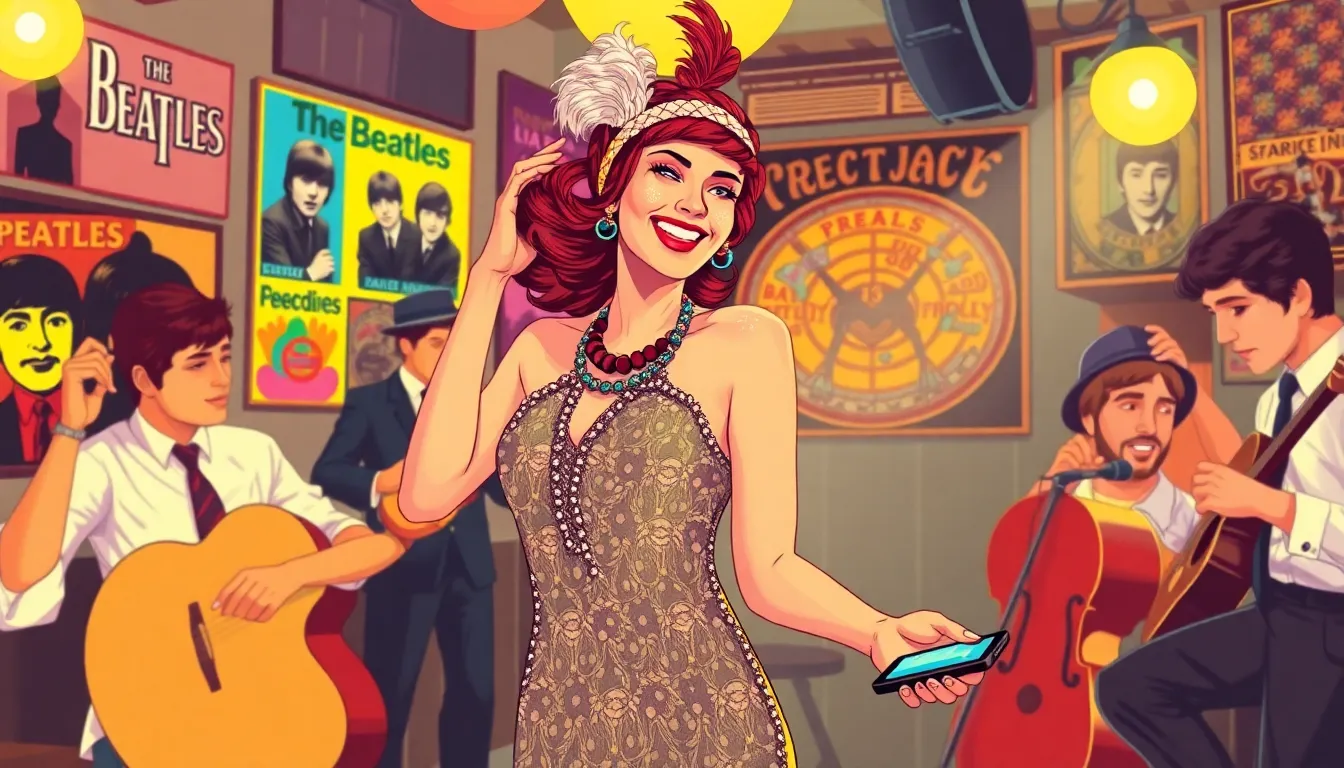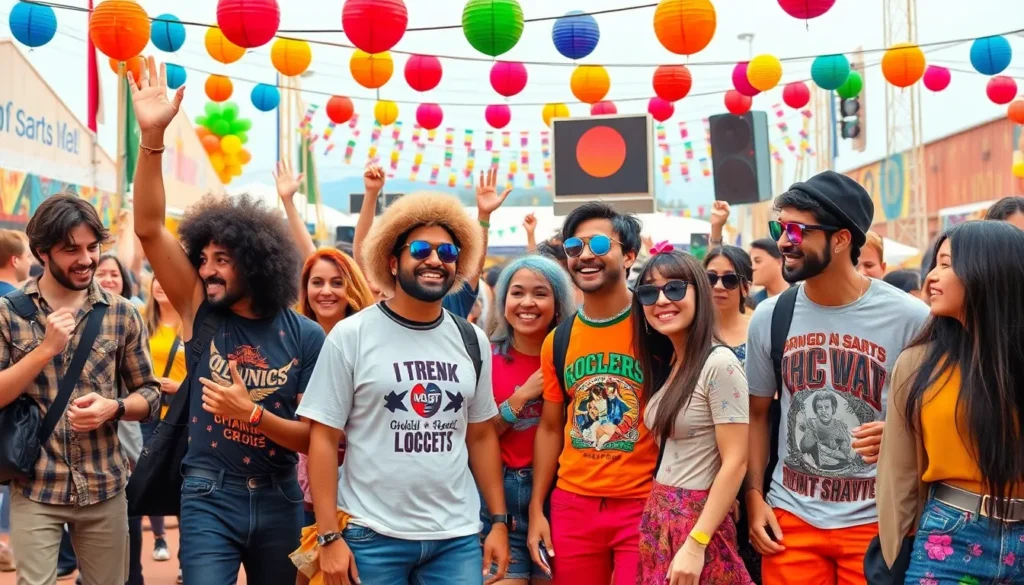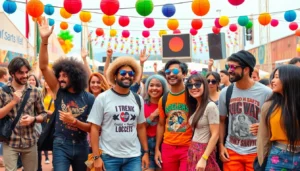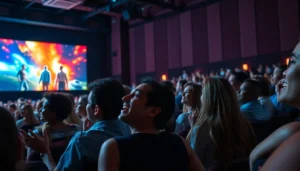Table of Contents
TogglePop culture isn’t just a fleeting trend; it’s a vibrant tapestry woven from the threads of music, movies, fashion, and social movements. From the groovy days of the ’60s to today’s TikTok sensations, each era tells a story that shapes how society thinks and feels. If you think history is just dusty books and boring lectures, think again!
Overview of Pop Culture History
Pop culture history reflects societal shifts and trends that shape collective identity. From the 1960s onwards, significant movements in music, film, and fashion have emerged, influencing public sentiment and behavior. The Beatles’ arrival in America marked a turning point, igniting the British Invasion and transforming music.
In the 1970s, disco culture rose, creating dance floors across the globe. Meanwhile, the rise of punk challenged conventional norms through music and fashion. Films like “Star Wars” began to dominate box offices, establishing blockbuster culture.
The 1980s introduced iconic television shows that captured youth culture, while hip-hop gained momentum as a powerful voice for marginalized communities. The era saw an increase in music videos, reshaping how artists reached audiences. MTV played a central role, showcasing the visual aspect of pop culture.
During the 1990s, grunge emerged as a reaction to the previous decade’s excesses. Artists like Nirvana resonated with disillusioned youth, leading to a shift in musical themes. Additionally, the internet started gaining traction, impacting how people consumed media, fostering communities around shared interests.
Entering the 2000s, reality television transformed entertainment, showcasing everyday lives rather than scripted narratives. Social media platforms became significant, allowing individuals to participate actively in pop culture. Viral trends started shaping public discourse, creating connections across diverse demographics.
Through the decades, each era contributed unique influences to pop culture. The ongoing dialogue between generations continues to redefine tastes and interests in society. Understanding this history provides insight into how cultural currents evolve and reflect broader social changes.
Key Eras in Pop Culture History

Pop culture history encompasses key eras that define societal shifts and collective identity. Each period contributes uniquely to the narrative of culture.
The Roaring Twenties
The 1920s marked a vibrant era characterized by economic prosperity and cultural innovation. Jazz music dominated, with artists like Louis Armstrong and Duke Ellington gaining fame. Flappers emerged, symbolizing women’s liberation through fashion and social behaviors. Movies transitioned to “talkies,” captivating audiences with sound. The Harlem Renaissance flourished, fostering Black arts and literature. Prohibition influenced underground speakeasies, shaping social norms. Additionally, iconic brands and advertisements began to target youth culture, paving the way for modern marketing strategies.
The Swinging Sixties
The 1960s heralded a cultural revolution driven by countercultural movements. Music from The Beatles and The Rolling Stones resonated, influencing fashion and youth identity. Civil rights movements advocated for social justice, inspiring a shift in public consciousness. Psychedelic art and experimental theater challenged traditional norms. Iconic films like “Easy Rider” reflected societal changes and the quest for freedom. Fashion trends, such as tie-dye and bell-bottoms, defined this expressive decade. Furthermore, the space race captured imaginations, symbolizing human ambition and innovation.
The Digital Age
The digital age transformed pop culture through technological advancements. The rise of the internet revolutionized access to media and communication. Streaming services like Netflix and Spotify reshaped how audiences consume content. Social media platforms, such as Instagram and TikTok, enabled rapid trend dissemination, impacting public discourse. Memes became a new form of expression, uniting global audiences. Virtual communities emerged, offering new spaces for cultural exchange. The accessibility of content democratized influence, allowing diverse voices to shape pop culture narratives.
Influential Pop Culture Icons
Pop culture icons shape society’s trends and values, representing significant cultural shifts. Both music legends and film and television stars have left indelible marks on the collective consciousness.
Music Legends
Music legends such as Elvis Presley, Michael Jackson, and Madonna transcended generations. Elvis revolutionized rock and roll, influencing numerous artists with his unique sound and style. Michael created pop music’s modern foundation, while Madonna redefined female artistry through boundary-pushing performances and hits. Each artist sparked movements, creating lasting legacies that continue to inspire new talents. Their contributions reflect societal changes, embodying the spirit of their respective eras.
Film and Television Stars
Film and television stars like Audrey Hepburn, Marlon Brando, and more recently, Meryl Streep and Denzel Washington, shaped cinematic landscapes. Audrey brought elegance and charm to classic films, while Marlon’s intense performances changed acting standards. In contemporary media, Meryl and Denzel showcase the power of storytelling through their versatile roles. Each star not only entertained but also addressed social issues through their work, reflecting cultural conversations of their times. Their influence remains visible, informing aspiring actors and storytellers around the world.
Impact of Technology on Pop Culture
Technology has profoundly transformed pop culture landscapes. The internet revolutionized how information spreads and allows instant access to diverse content. Streaming services like Netflix and Spotify offer vast libraries, enabling consumers to choose what to watch or listen to at their convenience.
Social media platforms foster community engagement and viral trends that shape cultural conversations. Influencers leverage these networks to connect with audiences directly. This shift empowers individuals to participate actively in pop culture, beyond traditional consumer roles.
Mobile technology has changed viewing habits. Audiences consume content on the go, leading to shorter attention spans and a demand for quick, engaging material. Platforms like TikTok highlight this trend, where short videos thrive, reflecting fast-paced cultural exchanges.
Gamification also plays a crucial role. Video games now integrate into mainstream culture, influencing music, fashion, and social interactions. Major events like esports competitions attract millions, blurring the lines between gaming and traditional sports.
Virtual reality and augmented reality introduce immersive experiences that reshape entertainment. These technologies offer new ways to engage with narratives, expanding storytelling capabilities. For instance, immersive music videos and virtual concerts bridge the gap between artists and fans.
The accessibility of production tools democratizes content creation. Anyone can create and share their work, leading to a diverse range of voices and perspectives in pop culture. This shift diversifies mainstream narratives and challenges traditional gatekeeping.
As technology continues evolving, its influence on pop culture remains significant. Understanding this interplay provides insights into current trends and future cultural shifts.
Globalization and Pop Culture
Globalization significantly transformed pop culture, fostering a blend of influences from around the globe. It facilitated the exchange of ideas, trends, and artistic expressions, allowing phenomena like K-pop and anime to gain widespread popularity outside their origins. Music genres like reggaeton and Afrobeat illustrate how cross-cultural collaborations shape modern sounds, resonating with diverse audiences.
Western media often dominates pop culture, yet local adaptations enrich these narratives. Bollywood films, for example, incorporate traditional Indian themes while appealing to global viewers. Television shows such as “Narcos” have introduced audiences to Latin American stories, blending language and culture in dynamic ways.
The internet plays a crucial role in this exchange. Platforms like YouTube and Instagram enable artists and creators to reach international audiences instantaneously. Viral challenges and memes create a shared cultural experience, transcending borders and bringing people together over common interests.
Social media platforms foster real-time engagement with pop culture trends, allowing fans to participate in ongoing conversations. The accessibility of diverse content promotes cultural awareness and appreciation, highlighting the interconnectedness of global societies.
Cultural festivals around the world showcase unique traditions and pop culture elements, drawing visitors and participants. Events like Comic-Con celebrate comic books and pop culture phenomena, attracting international fans who connect through shared passions. Such gatherings strengthen community ties and broaden understanding of different cultural backgrounds.
Ultimately, globalization reshapes pop culture, merging influences that reflect the increasingly interconnected world. It affords opportunities for artistic expression and fosters dialogue among diverse cultures, creating a vibrant tapestry of global creativity.
Pop culture serves as a mirror reflecting society’s evolving values and interests. Each era contributes its unique flavor to the cultural landscape shaping collective identities and influencing generations. From the revolutionary sounds of The Beatles to the rise of digital platforms that democratize content creation pop culture continues to adapt and thrive.
As globalization intertwines diverse influences the richness of shared experiences only deepens. This dynamic interplay fosters creativity and innovation allowing voices from all corners of the world to resonate. Understanding pop culture history not only enriches appreciation for its art forms but also highlights the profound connections that unite us across time and space.







